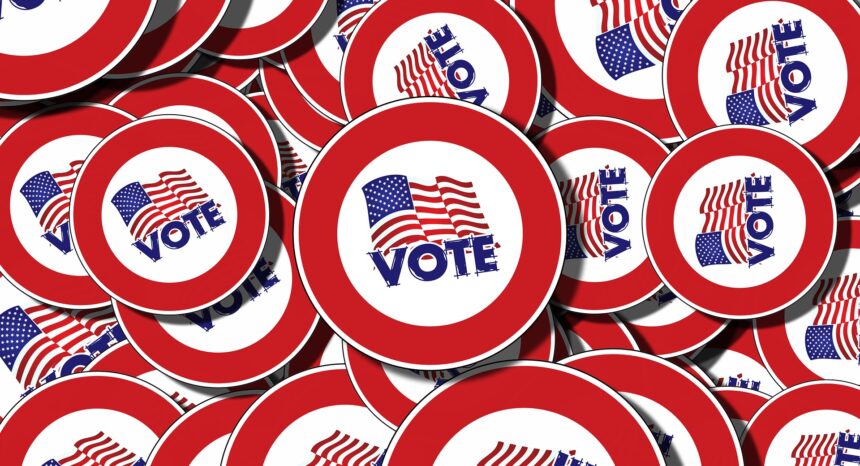The U.S. midterm election campaign has been going on for months, with upwards of $5 billion having been spent to sway the vote. All that spending has not been wasted, but it will account for far less than more persistent factors in determining the outcome of the midterms.
One factor extends back two decades, the time at which wide swings in voter support disappeared during elections. It’s the story of party polarization, which began gradually in the 1980s and was firmly in place by the early 2000s. It was marked by a widening of the partisan gap between Democrats and Republicans, but also a strengthening of partisanship and antipathy toward the opposing party.
The hostility that many partisans have for the other party is a larger driver of the vote than might be assumed. Party identification was once easily the best predictor of how people would vote on election day — Democrats lining up behind their party’s candidate and Republicans backing their party’s nominee. But party opposition now shares that distinction, research shows. When political science scholars Alan Abramowitz and Steven Webster examined post-1990s elections, they found that “ratings of the opposing party were by far the strongest predictor” of vote choice. “The greatest concern of party supporters,” they write, “is preventing the opposing party from gaining power.”
Today’s candidates face a double hurdle in trying to woo voters. They need not only convince them that they’re the better choice but also convince them that the party they represent is an acceptable choice. To be sure, most undecided voters are weak partisans, so their loyalty to the party they typically prefer is not insurmountable. What complicates the effort to convert them is that they tend to hold negative views of both the Democratic and Republican parties — a tendency that is relatively new and coincides with the advent of heightened and divisive partisanship among political elites.
So how many undecided voters are there and where will they turn in the campaign’s closing weeks? They number less than 10% of self-described likely voters, down even from recent campaigns. It’s unlikely that either party will capture a super-majority of the undecided. Typically, the split is within a narrow range, enough to tip a razor-thin election but otherwise a footnote in post-campaign analyses.
Partisan polarization has elevated the significance of the turnout differential – the difference in the turnout rate of the two parties’ loyalists. Scholars and pollsters call it the enthusiasm gap, measured by the percentage-point difference between Republicans and Democrats when asked if they are “very” or “extremely” interested in voting in the upcoming election. Over the past four midterms, the enthusiasm gap has averaged 13 points and the party with the enthusiasm edge has picked up an average of 37 House seats.
What’s the enthusiasm gap this time? During the Spring of this year, Republicans were 10 points more likely than Democrats to say they were very or extremely interested in voting in the November election. In last week’s Morning Consult/Politico poll, Democrats had a slight edge. What accounts for the change? Perhaps campaign spending contributed a small fraction, but other developments have been the drivers. The Supreme Court’s Dobbs decision, the House January 6 committee hearings, and Donald Trump’s ongoing presence (unprecedented for a former president) in the midterm elections have severed to mobilize Democrats.
There’s a final element that could come into play in November. I call it the luck factor, and it’s particularly relevant to the Senate races. According to the forecasts of Politico, Cook Political Report, and FiveThirtyEight, there are roughly 10 Senate contests still in play. If either party were lucky enough to win a disproportionate majority of the very close races, it would control the Senate. It’s happened before. In the 1980 election, Republicans won control of the Senate for the first time in three decades. Luck was on their side. Seven Senate races were decided by 52-48% or less, and Republicans won all seven.
Thomas E. Patterson, Bradlee Professor of Government & the Press at Harvard’s Kennedy School, is the founder of The Journalist’s Resource and author of several books, most recently “Is the Republican Party Destroying Itself?” JR has posted a new installment of his Election Beat 2022 series every week leading up to the midterm elections. Patterson can be contacted at thomas_patterson@harvard.edu.
Further Reading:
Seta J. Hill, “A Behavioral Measure of the Enthusiasm Gap in American Elections,” Electoral Studies 36 (2015): 28–38.
Ezra Klein, “Why We’re Polarized,” Simon & Schuster, 2020.
Geoffrey Skelley, “Just How Many Swing Voters Are There?” FiveThirtyEight, September 19, 2019.


Expert Commentary